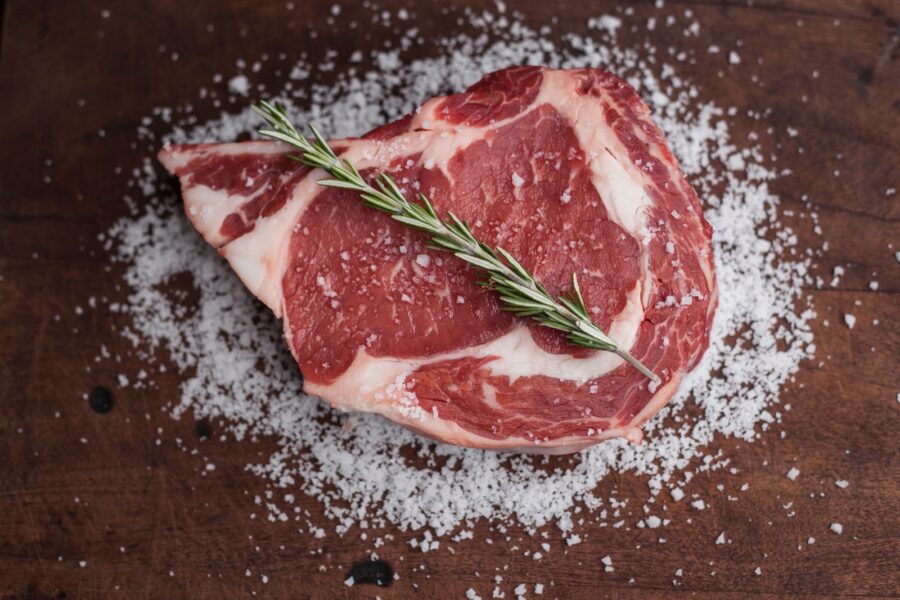If anyone needed a reminder that meat producers are cyclical businesses, fourth quarter results provided it. Across the space, profits deteriorated at a shocking pace.
For Brazil’s JBS SA, the world’s largest food company by revenue in 2022, on a consolidated basis Adjusted EBITDA (earnings before interest, taxes, depreciation and amortization) dropped 24%.
But in the U.S., declines were much more stark.
In the company’s Beef North America segment, Adjusted EBITDA in Q4 plunged 91%; the full-year decline was 58%. Profits in the pork business fell by more than half in the fourth quarter. U.S. poultry processor Pilgrim’s Pride, of which JBS owns roughly 83%, saw its Q4 EBITDA drop 80%.
The poor results clearly are not the result of poor execution by JBS, or eroding market share. The entire industry is struggling. Fellow Brazilian giant Marfrig Global Foods saw North American Adjusted EBITDA fall 80% in Q4. Hormel no longer breaks out direct results for meat production but, on its earnings call, management talked up significant challenges in pork and poultry.
And U.S. leader Tyson Foods too posted a soft quarter. Its reported adjusted net earnings per share declined some 70% year-over-year. The figure fell short of analyst expectations by some 38%. It was the company’s biggest miss in at least five years.
Unsurprisingly, investors have not reacted well. JBS stock is at its lowest level since October 2020. Marfrig stock is near a five-year low, and not that far away from its cheapest price ever. Pilgrim’s Pride shares are down about one-third from highs reached in June, and the stock now has spent more than seven years going absolutely nowhere.
Like those of JBS, Tyson shares are back at 2020 levels; like Pilgrim’s Pride, multi-year returns in Tyson are basically zero.
The problem for the group is that things are likely to get worse before they get better. Cycles in pork and beef, in particular, are measured in years. Cattle availability clearly is limited, but ranchers cannot instantly produce new supply. It may be 2026 before supply challenges truly ease.
And in the meantime, feed and even live animal costs continue to rise in an inflationary environment. And so profitability gets squeezed from both sides. Tyson’s beef segment, for instance, had operating margins of 19% in the fourth quarter of 2021. In Q4 2022, the figure was less than 3%.
The key question is whether current results are solely the result of short-term pressures, or if they are signaling longer-term concerns. We’ve seen packaged food companies pass along significant pricing to consumers. But recent results suggest meat producers don’t have quite the same pricing power.
Meanwhile, feed costs don’t seem to be moderating. Drought conditions have posed a challenge in recent months and will do so again at some point. The most recent strain of avian flu was the most damaging ever, and future pandemics seem possible.
At the same time, we’ve been here before.
Owing to consumer and environmental factors, the industry’s long-term demise has been projected for years. Yet production, thanks in part to developing markets, continues to rise. Short-term results were pressured as recently as 2020; stock prices across the sector would rally nicely over the next two years.
The cycle is clearly working against meat producers at the moment. But history suggests – eventually – that will change.
Vince Martin is an analyst and author whose work has appeared on multiple financial industry websites. He’s the lead writer at Overlooked Alpha, which offers market-wide and single-stock analysis every week.
The Food Institute Podcast
Click the play button above to listen to the episode.
How did a small sub shop from Point Pleasant, New Jersey, grow into a 2,400-store operation across 50 states? Jersey Mike’s Franchise Systems Inc. senior vice president Caroline Jones shares the company’s evolution after deciding to franchise the concept in 1987. Additionally, Jones shares stories of growing up in the business, and how the company’s philanthropic efforts help to endear franchise locations to each community they serve.




